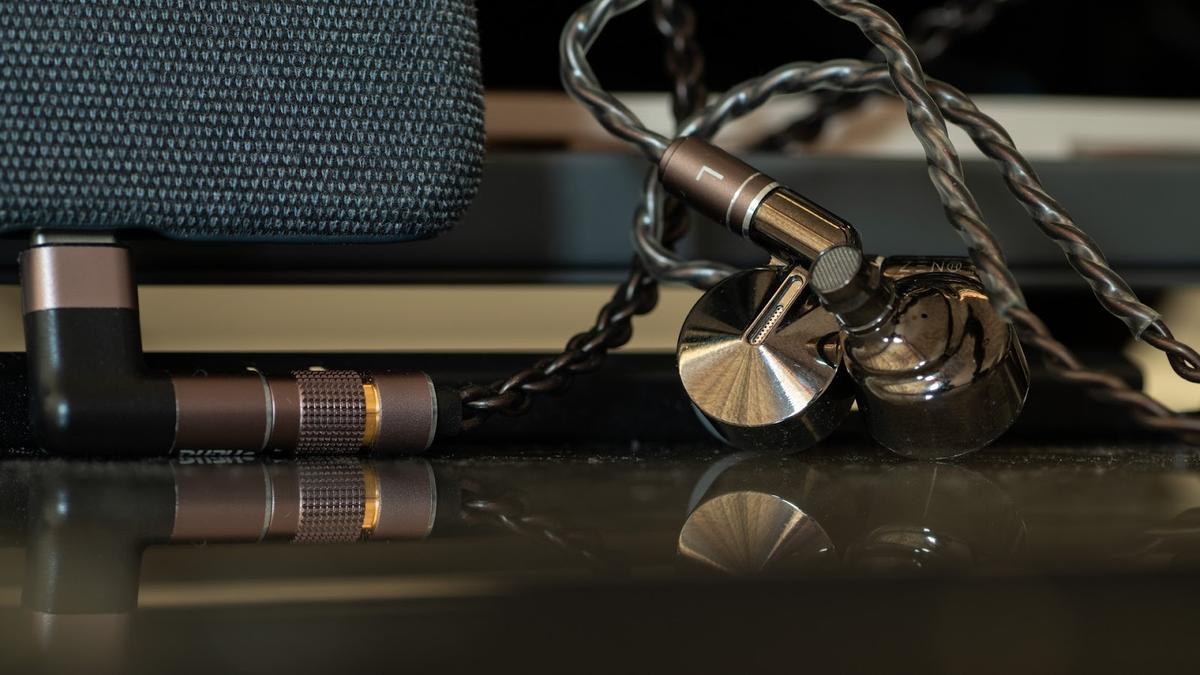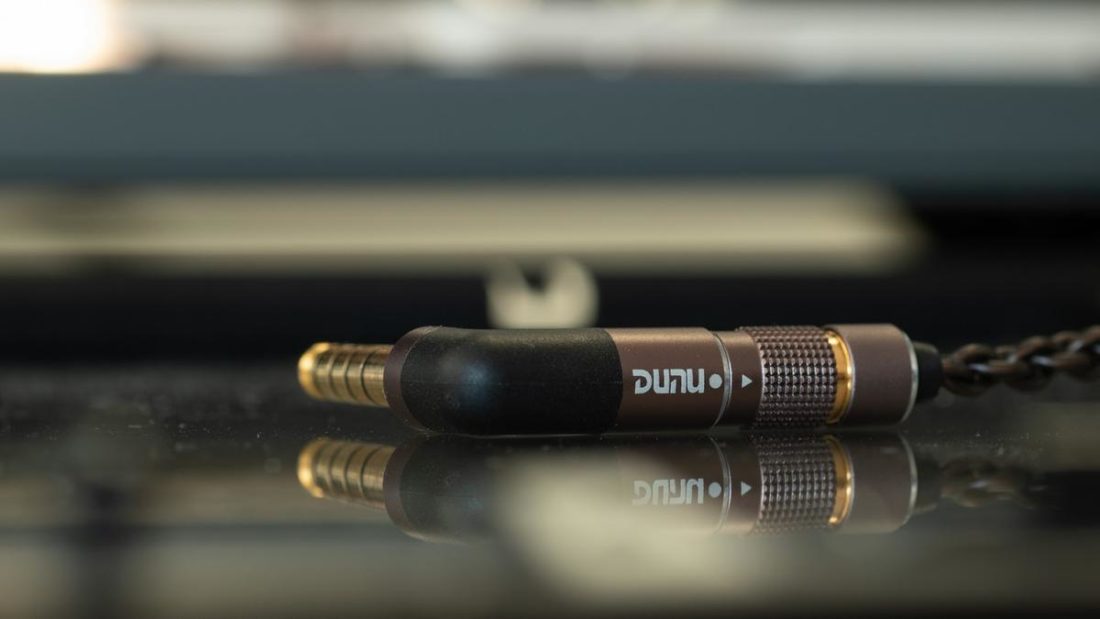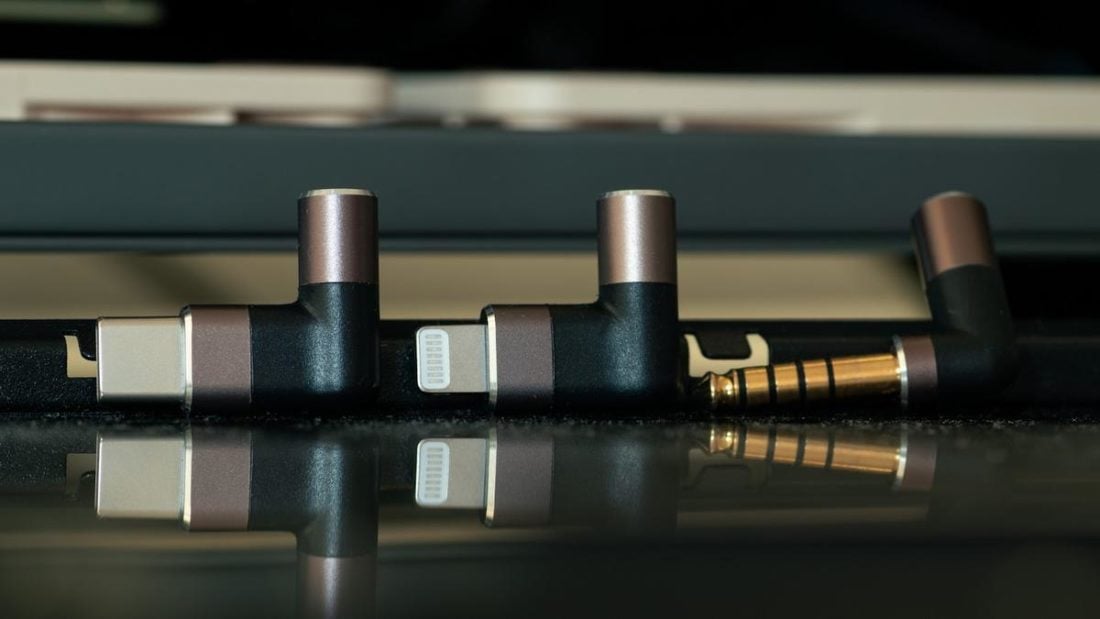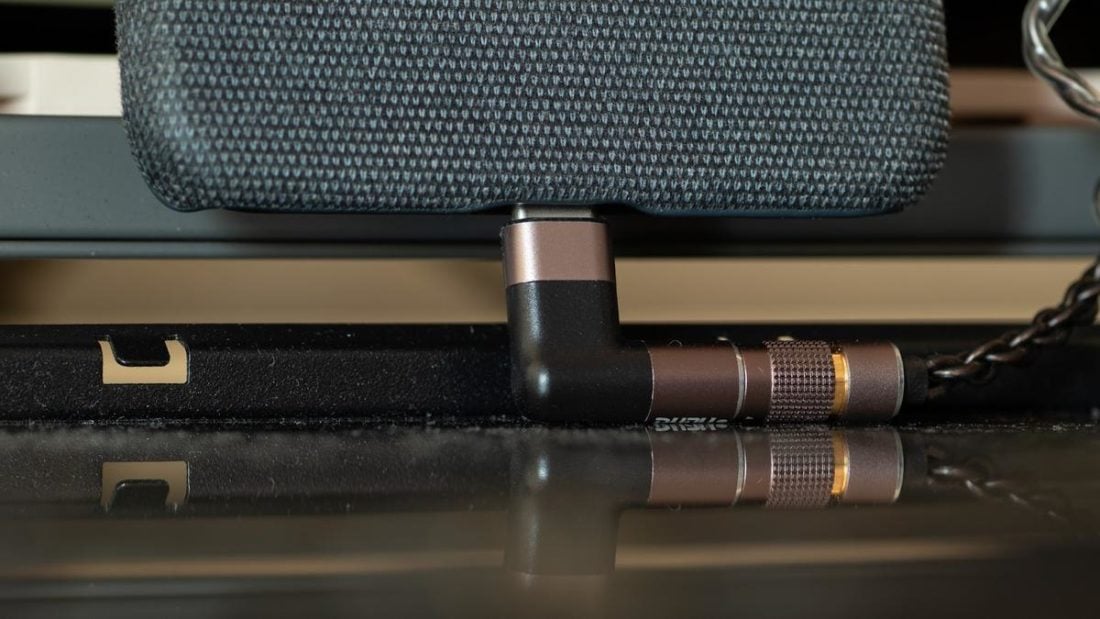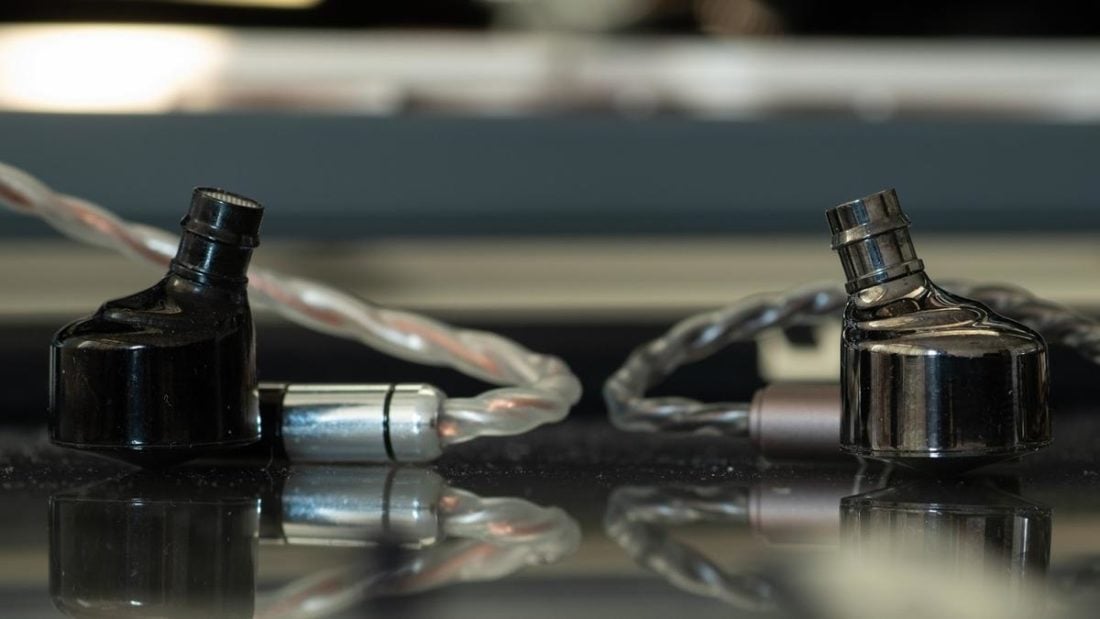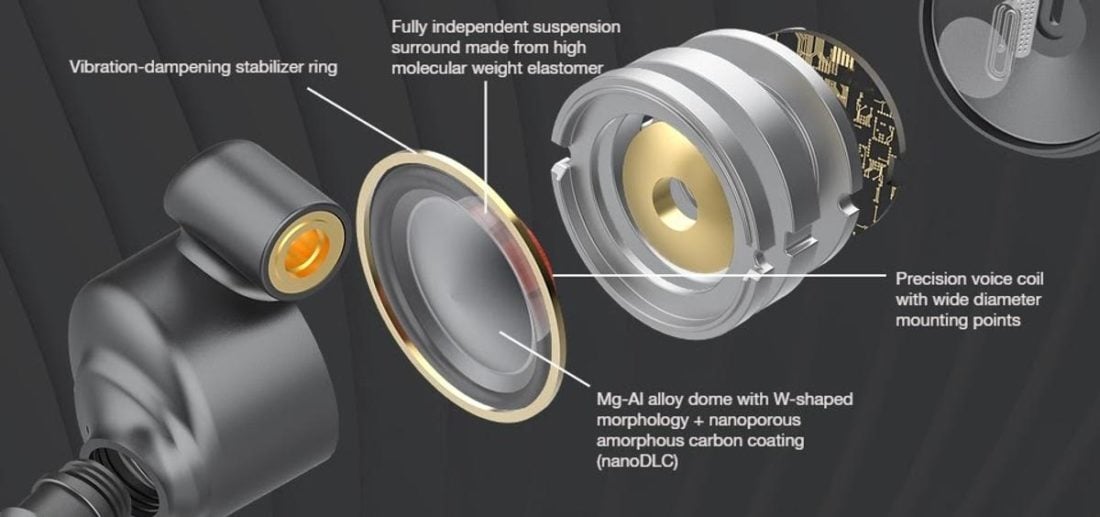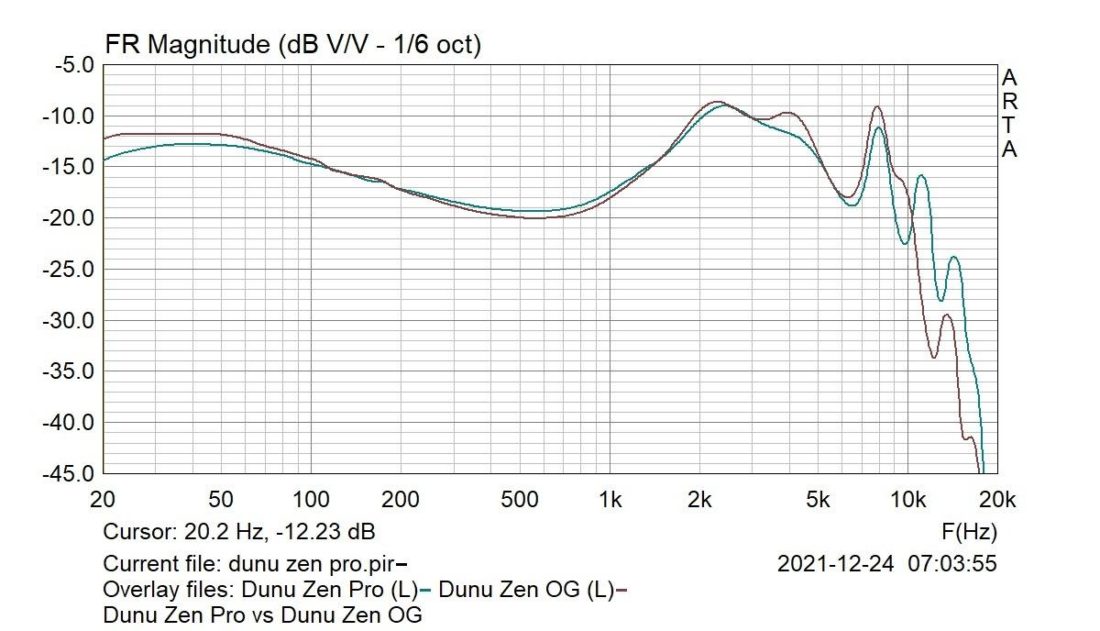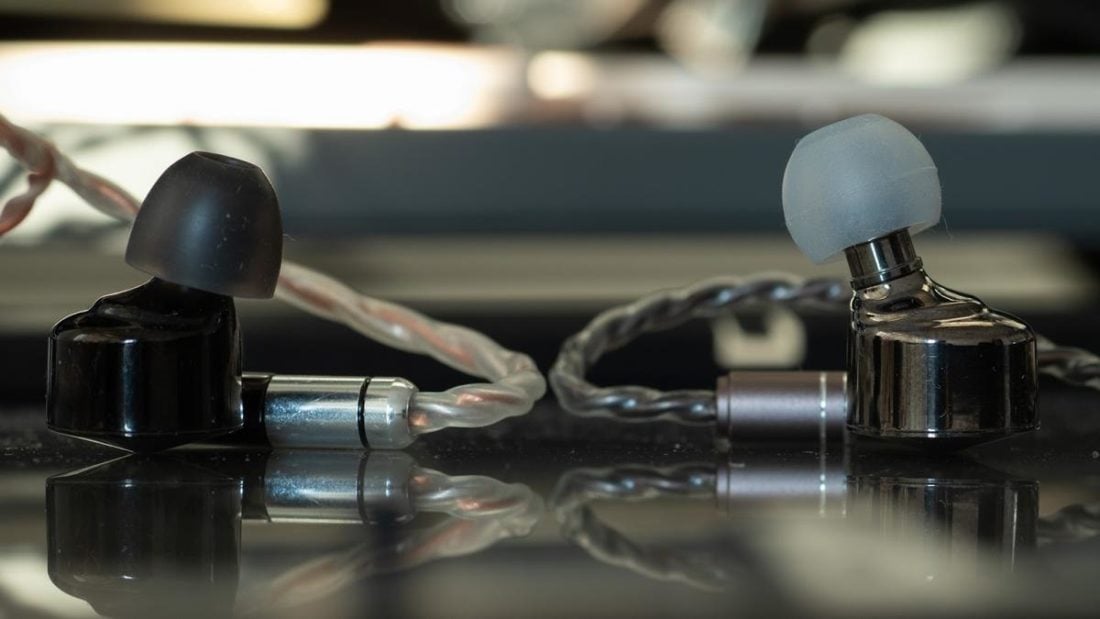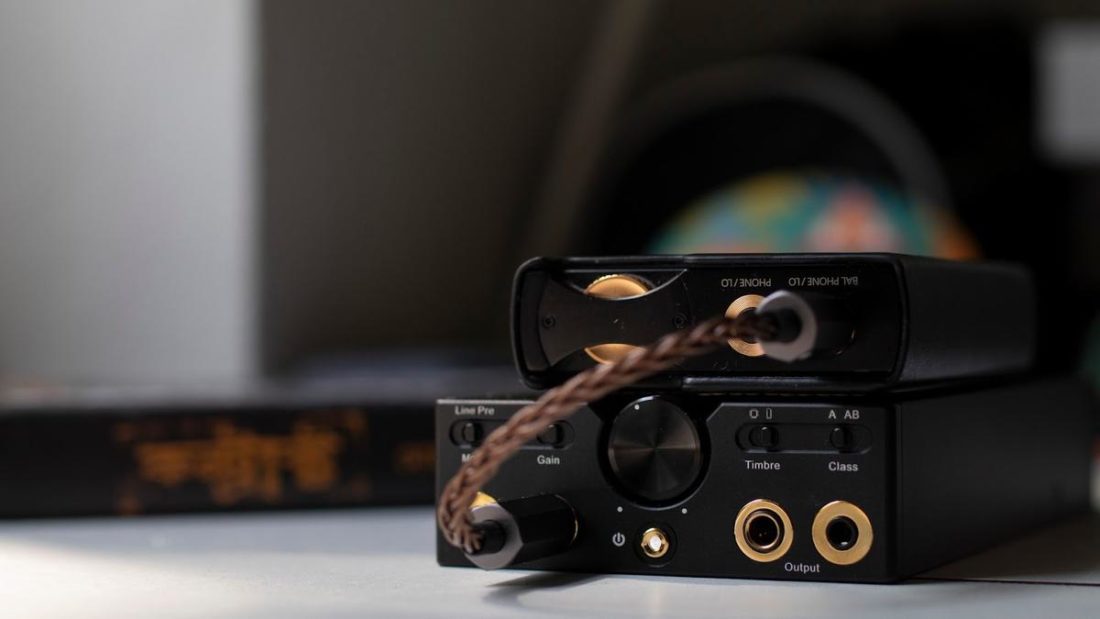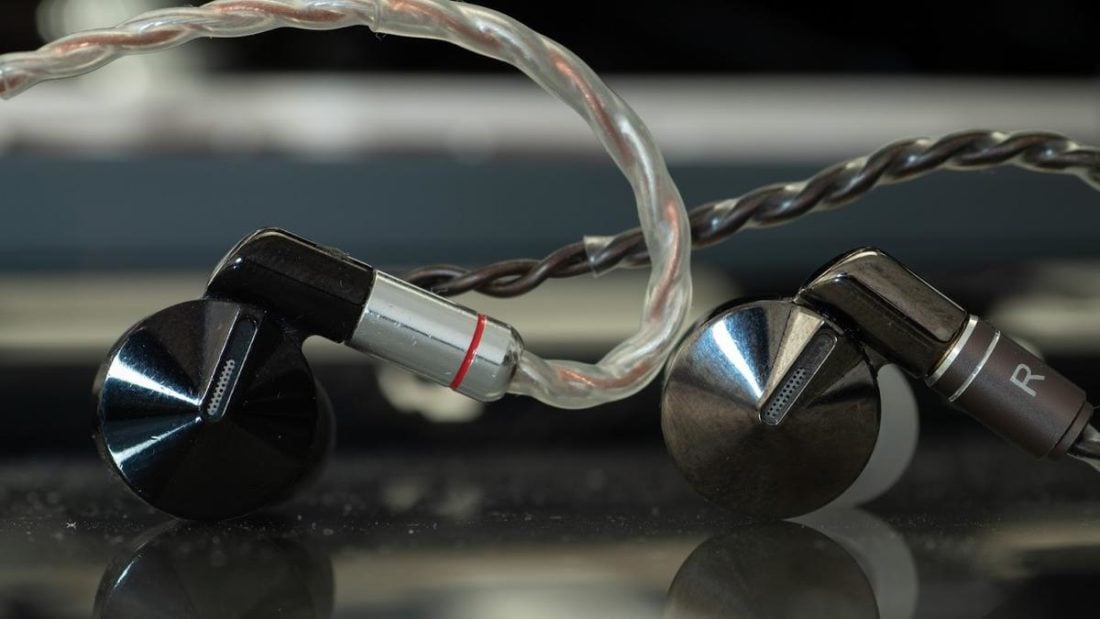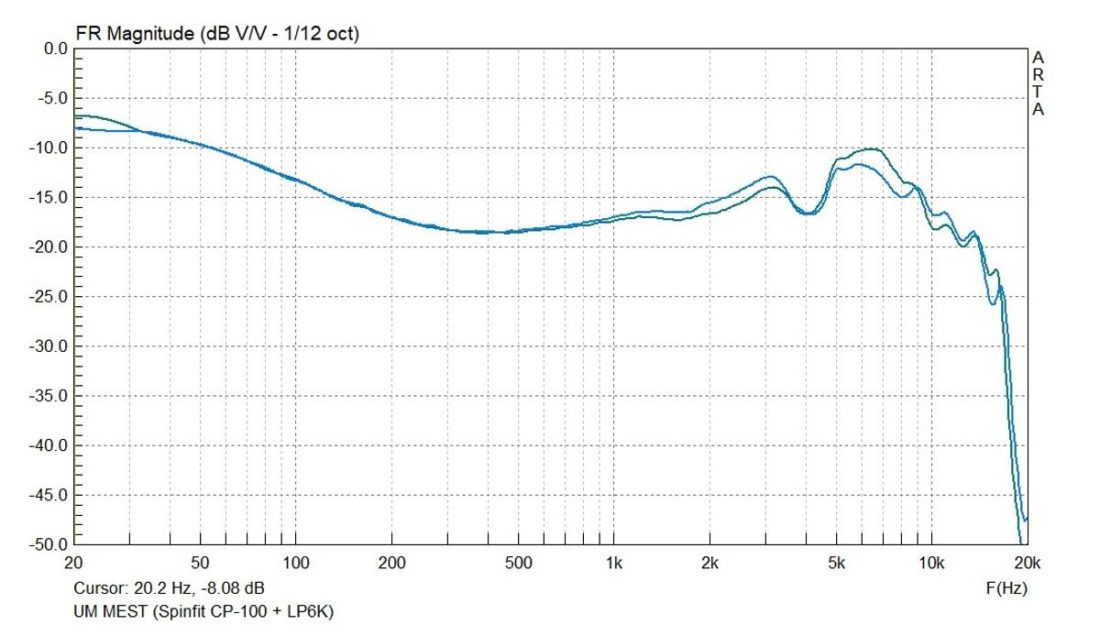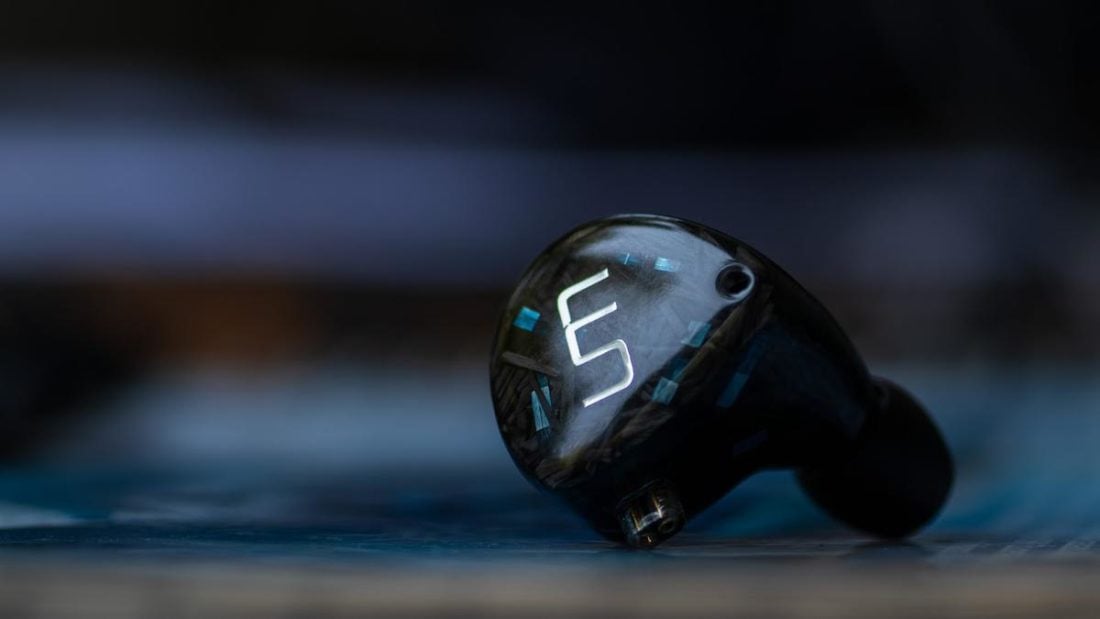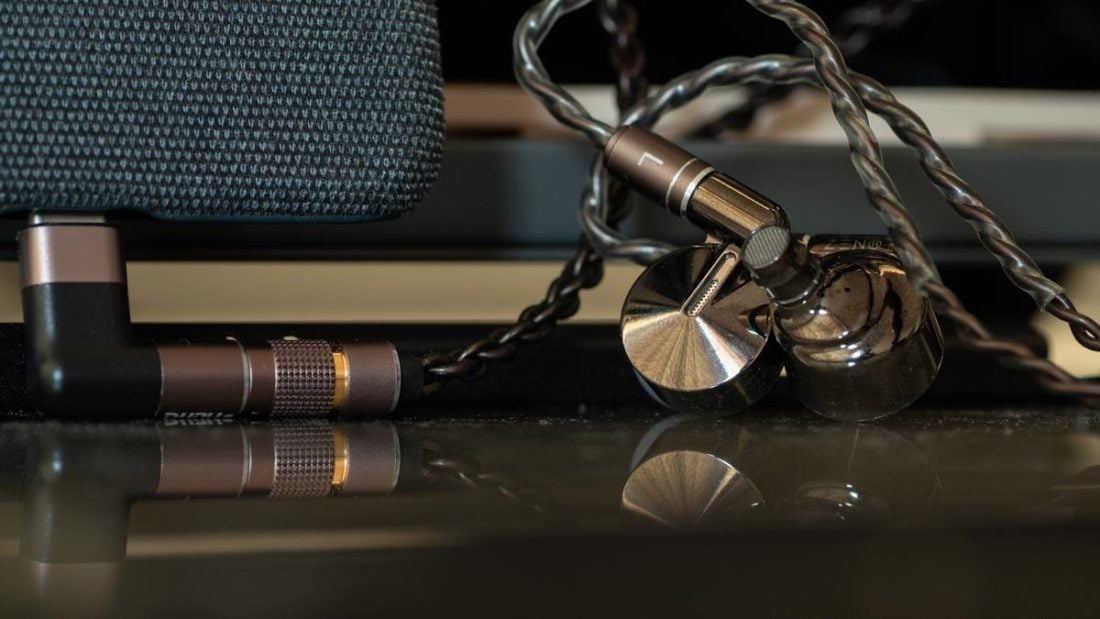Single dynamic driver flagships are making a comeback, and Dunu’s Zen Pro are the latest entry into the crowded market. The Zen Pro, as the Pro moniker suggests, are intended as an improved version of the original Dunu Zen (now discontinued). For the Zen Pro, Dunu has altered the housing color and changed the stock cable to a more pliable one. Moreover, they re-engineered the magnet system and re-tuned the driver. For all these modifications they are asking a USD $200 premium over the original’s price. Is the substantial price hike justified, and how well can the Zen Pro compete against their peers? Read on.
Technical Specifications
Form: IEM Drivers: 1 X 13.5mm ECLIPSE driver Second generation Magnesium-Aluminum alloy dome Nanoporous Amorphous Carbon coating (nanoDLC) Fully independent suspension surround 1.8 Tesla external Ring-Type Neodymium Magnet Impedance (Ohm): 16 Ohm @ 1kHz Sensitivity (dB): 112dB @ 1kHz Frequency Response (Hz): 5 Hz – 40 kHz Total Harmonic Distortion: < 0.2% @ 1 kHz Removable Cable: Y Source Jack: 3.5mm, 4.4mm, 2.5mm Cup/Shell Jack: mmcx Weight (g): 21g Additional Features: DUNU Quick-Switch modular plug system
Packaging
Unfortunately the review tour unit came without any retail packaging. You can take a look at my unboxing of the original Dunu Zen since the packaging is similar in terms of design and accessories, apart from the cable.
In the box
Dunu Zen Pro IEMs PU Leather carrying case Cleaning cloth Cleaning brush Dunu CHORD cable (DUW-03 in Mainland China) 4.4mm and 2.5mm modular QLock+ connectors Airplane adapter 6.35mm adapter Shirt-clip 10 pairs of eartips 9 pairs of silicone eartips 1 pair of foam eartips
It is evident that Dunu has a very fleshed out and rich accessory package. One probably won’t need to look elsewhere for “parts”. The CHORD is a 4-core cable in Litz configuration with mixed-strand Furukawa OCC Copper and Neotech Silver. Both of the raw materials suppliers are some of the most highly regarded in the industry, so clearly Dunu did not skimp on cost. In addition, the cable is equipped with their patented Quick-Switch modular plug system. With the Quick-Switch system, you simply pull the cable on the plug end and it detaches. Then you can swap with a different termination. The mechanism is robust and I have been using it for over a year now without connection issues. Dunu also supplied the Digital Q-Lock Plus connectors with Type-C and Lightning connections. These act as mini dongles so you can just plug-and-play from the USB-C port on smartphones. While convenient, I found the sound of the digital connectors to be compressed and lacking in dynamics. These connectors are great proof of concepts but won’t replace a dedicated DAP or a good dongle.
Design
The Zen Pro have 316L Stainless Steel shells with a glossy Titanium-colored finish. There is one vent near the nozzle while the back of the IEMs have a long “slit” that is used to control airflow inside the driver housing. The nozzle is fairly long and has a raised lip and metal mesh. The mmcx connector has Dunu’s patented catch-hold mechanism for more reliable connection. The shells feel positively dense in hand and are designed well. The biggest issue is the glossy finish that attracts smudges and fingerprints.
Comfort and isolation
Comfort is good for me with a snug fit. The weight is mostly manageable. Isolation is average due to the vent on the back of the IEMs.
Internals
Dunu debuted a new driver system with the OG Zen that goes by the ECLIPSE trademark. This system doesn’t necessarily indicate the diaphragm material rather how the dome, driver surround, and voice-coil attachment process is executed. The Dunu Zen Pro have a variation of the ECLIPSE system with a 13.5mm dynamic driver system with a Magnesium-Aluminium (Mg-Al) alloy diaphragm where the micro-pores on the diaphragm surface have been filled with nanoDLC to increase surface stiffness. The driver also has a W-shaped dome, similar to the Focal Clear driver. The diaphragm material has similarities with the Clear as well. The ratio between the metals in the alloy was adjusted, resulting in a stiffer, lighter diaphragm with higher internal damping and widened bandwidth in the high frequencies. The biggest issue of the OG Zen was their lack of treble extension and the Zen Pro addresses this issue head-on. Another interesting thing about the driver dome is that it occupies a larger area than a typical driver system. The magnet assembly is also unique in that it’s a ring-type motor and has > 1.8T magnetic flux which is one of the highest among all dynamic driver IEMs. This magnet system has also been improved over the predecessor, with tighter tolerances and more consistent magnetic flux at the voice coil.
Dunu Zen Pro Sound
I could not hear any evident coloration across the frequency spectrum at all, and they are one of the few neutrally-tuned, single-dynamic driver IEMs in the TOTL space. There is one caveat though: the sound signature can change noticeably based upon the tip selection and insertion depth. I recommend trying a few of the supplied eartips and finding out the one that works best. Moreover, the tips can be installed on the nozzle to various “depths” and this can be experimented with as well.
Bass
The Zen Pro goes for a controlled sub-bass boost of about 5dB with the sub-bass being strongest around 50Hz. Bass rises slowly from 400Hz, which helps the mid-bass gain some body and weight. The mid-bass is really well tuned to my ears, with no bass bleed into the lower-mids. Snare hits are dense without being overbearing. The bass is very agile for a dynamic driver and can keep up with fast basslines in many metal songs, e.g. All that Remains’ This Calling. Bass texture stands out the most, with different instruments displaying their characteristic sound in busy mixes. Where the bass falters is the rumble factor. Sub-bass is present but won’t suit your bass-head desires. Dunu went for a neutral tuning so a dense sub-bass would compromise mid-bass texture to some degree. Another intangible that is missing is the sense of slam. Sudden bass drops or heavy snare hits lack the tactility that certain single-dynamic driver IEMs are capable of producing.
Midrange
Midrange is where Dunu brought about some noticeable changes from the OG Zen. The OG Zen have a pronounced upper-mid, further exaggerated by a peak around 4KHz. The 4KHz peak is noticeably dialed down here and the transition from lower-mids to upper-mids follows a near-reference tuning. Male vocals and low guitar notes have exemplary clarity and precision. The only bit of coloration in the midrange is in the hint of warmth stemming from the upper-bass rise around 300Hz. This adds body to baritone vocals and makes them more true-to-life. The upper-mids are well controlled and avoid shoutiness and shrillness. Both male and female vocals have excellent articulation and string instruments have lifelike attack-decay. You can pick out the different tone color of nylon and steel string guitars and distortion guitars never sound too forward. The Zen Pro’s midrange tuning facilitates long-term listening and justifies the “Zen” nomenclature. One criticism of the midrange tuning is that it can be too safe and “normal” at times. If you want more energy to the guitar riffs, or more crunch to the solos, etc. the Zen Pro will let you down. These colorations can sometimes be detrimental in other tracks and the Zen Pro does the balancing act well.
Treble
The OG version have a steep treble roll-off from 10KHz which counter-balances the lack of brilliance with a deliberate peak around 8KHz. This does not induce sibilance but will alter the timbre of cymbal hits and their natural decay is abrupt and lacks extension. Zen Pro rectifies this issue to a degree. The 8KHz peak is toned down somewhat and there are additional peaks around 11.5KHz and 14.5KHz, with the latter being mostly muted. Air frequencies are more apparent as a result, and cymbal hits decay in a more natural manner. There are a couple shortcomings in the treble though. Firstly: the 6KHz dip could be less prominent. This can be perceived as a lack of “clarity” in the treble region by many listeners. However, it is fairly simple to equalize that part based on individual taste and treble tolerance. The other shortcoming is the peak around 11.5KHz which to my ears can be a bit intense in certain recordings and highlights the shimmer of the instruments more than necessary. I never felt fatigue during listening, but at times, the shimmer of cymbal hits became a bit uncomfortable. This can be tuned via changing eartips, or by simply using a parametric EQ. Finally, the Zen Pro are still not “very airy” if that is the sound signature you are after. They won’t offer hyper-clarity and gobs of airiness, but I find that the treble tuning is fairly natural and will suit a range of taste and genres.
Soundstage and imaging
Overall soundstage is a definite improvement over the original Zen but falls short of some of their peers. The focus on the midrange pulls the vocals closer to the listener and this can reduce the perception of stage width. Stage depth and height were fairly good given the in-ear form-factor. Imaging is very good, with certain shortfalls that plague every IEM out there, e.g. things that are happening at the back of your head are not positioned correctly. The rest of the instruments are well placed and positional cues are readily picked up. Stereo panning is reproduced well, making the Zen Pro great for binaural tracks and general gaming or watching movies.
Dynamics and speed
In high dynamic-range recordings every subtlety is picked up. Dave Brubeck’s Take Five has small gradations in cymbal volume which one can easily recognize when listening to the Zen Pro. Slightly disappointingly, macrodynamics (sudden changes in volume) are lacking vs the OG Zen. The driver speed is even faster than the original, however, and can keep up with the busiest of tracks while keeping the outline of individual instruments intact. General timbre is natural albeit the upper-treble peaks can at times sound “zingy”. Overall resolution is excellent for a single-dynamic driver, falling short of the technical performance of some pure Beryllium foil drivers. Instrument separation is very good for the price but will fall short of some of the multi-BA or hybrid driver counterparts. Finally, layering is immaculate with backing vocals being delightfully drawn out from the mix. This area is the most improved from the original version and will cater really well to classical music listeners.
Comparisons
Vs Dunu Zen
Build quality, accessories, comfort, and isolation are largely similar between these models with the stock cable being the only difference. I much prefer the CHORD cable on the Zen Pro over the bulky DUW-03. Otherwise, they are similar in everything but the sound. OG Zen goes for a more energetic and raw tuning. The lack of treble extension is evident, but the focus on mid-treble keeps the highs from going dark. Bass has more slam and physicality on the original with superior macrodynamics. Stage is narrower with more up-front vocals. Guitar riffs are treated as first-class citizens and the OG Zen were rather unique in their delivery of Rock and Metal tracks. The Zen Pro dials the bass and mids down a notch and things calm down noticeably. With better upper-treble extension and less mid-treble focus the treble also feels toned down. The Zen Pro excels in singer/songwriter tracks and classical music as a result. The stage is wider, deeper, with better layering. Instrument separation is largely similar on both, and so is the imaging, but overall resolution is higher on the Zen Pro. For the USD $200 premium, you get a number of noticeable improvements indeed. I did feel let down by the reduced bass slam as that was one of the highlights for me on the OG Zen, so I would suggest OG Zen users to audition the Zen Pro if possible before purchase.
Vs ThieAudio Monarch
ThieAudio Monarch are tribrid IEMs with a 9-driver setup (1 dynamic + 6BA + 2 Electret) and are often considered one of the best IEMs under USD $1000. In terms of build, accessories, and comfort – I will pick the Zen Pro ahead of the Monarch. Isolation is better on the Monarch due to the resin shell and pseudo-custom fit. In terms of sound, ThieAudio goes for a more noticeable +10dB sub-bass boost from 150Hz. This has an interesting effect where the sub frequencies are very prominent but the mid-bass sound thin and anemic. Snare hits lack physicality as a result and in bass-heavy tracks sub-bass dominate the scene. Moreover, bass texture is noticeably lacking on the Monarch with sub frequencies often being reduced to a monotonous “hum” rather than individual bass notes being picked up. This lack of delineation between bass frequencies is the Monarch’s biggest weakness, but also adds to the “fun factor” in many EDM and Pop tracks, especially those with compressed dynamic range. The midrange follows the trend where the lower mids are thinner sounding on the Monarch than the Zen Pro. Baritone vocals lose their heft and subtleties like the thick understroke of grand pianos are not reproduced well. The Monarch do have higher clarity in the mids which is coveted by some listeners. Guitar riffs are more energetic on the Monarch which I preferred on Rock and instrumental tracks. Lastly, the treble is more prominent and better extended on the Monarch. There is some timbral mismatch going on here due to the ultra-fast EST drivers but this does not bother me much. Soundstage is wider and deeper on the Monarch as well. Macrodynamics and separation are better on the Monarch whereas Zen Pro are much better in terms of microdynamics. Imaging was somewhat different on the Monarch with a more 3D-like presentation but at times the superior layering on the Zen Pro gave an impression of better positioning of vocals. Overall, I prefer the tuning of the Zen Pro due to better bass rendition and male vocals performance. If you want a more flamboyant presentation with heavy sub-bass prominence, the Monarch remain a great option.
Vs Unique Melody MEST
UM MEST (version 1) is now discontinued but it is a model I have on hand while making comparisons. In terms of build, comfort, design, and accessories the Zen Pro wins without contest. Isolation is better on the MEST but you compromise on comfort. As for sound, the MEST are unabashedly colored with emphasis in both the bass and treble frequencies. The actual bass quality is far higher on the Zen Pro though, with superior bass texture and speed. The bass driver on the MEST is noticeably slow and compromises the coherency of the IEMs. Midrange is thicker and more recessed on the MEST. Treble, on the other hand, goes for added focus near the presence region with a 6KHz peak and only starts to roll-off around 15KHz. This results in a brilliant treble rendition with gobs of air and added intensity. I personally do not like this hyper-active treble response and always EQ’ed the treble down to suit my own tastes. Soundstage and imaging are far superior on the MEST, rivaling many full-size cans. Separation is also better, although layering, especially in the midrange, is better on the Zen Pro. Overall resolution is higher on the MEST. The UM MEST is a technical marvel with the bone-conduction driver and the quad-brid setup overpowers the single-dynamic Zen Pro when it comes to raw resolution. For me, resolution is not everything and the Zen Pro’s smoother, calmer presentation makes me prefer them over the MEST for long-listening sessions. For short listens and absolute resolving prowess, the original MEST is still one of the best around.
Where to Buy
Official Store
Conclusion
The Dunu Zen Pro have excellent build, comfort, and a stellar accessory pack. Dunu fixed some of the issues found on the original release and it is always great to see brands listening to community feedback. I do feel that some of the magic of the OG Zen has been lost. I miss the bass slam of the original and in certain tracks I wish there were a bit more energy in the presentation. On the other hand, the Zen Pro won’t beat the tribrids and quad-brids in the market that are targeting absolute resolution. As a standalone product, the Zen Pro are one of the few reference-tuned, single-dynamic driver, TOTL flagship IEMs. The tuning is really well done overall and has a certain calmness to it which is often abandoned in the TOTL space to showcase better technicalities.
